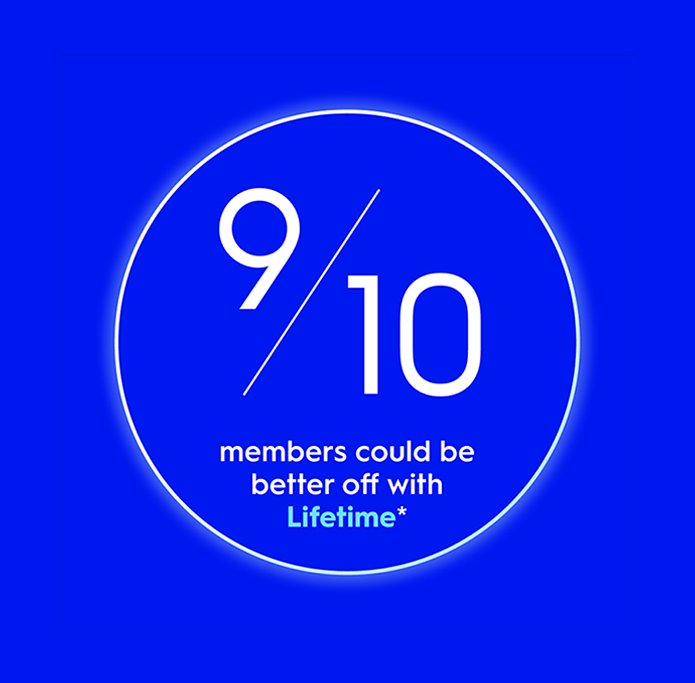Who is eligible for Income Protection (IP)?
The eligibility rules change a bit depending on your policy. But generally, you’ll be eligible for IP if you become too sick or injured to work and:
- have joined your employer sponsored AMP Super account,
- are a permanent employee, and
You’re generally not eligible if you’re:
- a casual employee
- a contract employee
- a non-executive director
- a family member in the employer sponsored plan.
How IP is worked out and paid
Generally, we work out your IP payment as a percentage of your salary - up to 75%. Although, there will be a maximum amount insured. Please refer to your insurance guide for more details.
Income from other sources may impact your monthly IP benefit payment
Generally, if you receive income from other sources while you are being paid a monthly IP benefit, then that benefit may be reduced by those payments. This may be called an offset in your plan.
How offsetting is applied to your benefit payment, and the other income sources that are offset vary across products and plans. We’ve provided some general information below, but it’s important to check the terms that apply to you. If you have insurance with AMP Super, check your insurance guide (available in My AMP) to see your terms and conditions.
How offsets are applied to IP benefit payments
Depending on your product or plan, your benefit payment may be offset:
- so that it doesn’t exceed 75% (or the percentage applicable to your plan) of your pre-disability income, or
- as a straight offset off your benefit payment.
Sources of income that may offset your benefit payments:
- Workers’ Compensation, Motor Accident Compensation, Social Security (or similar legislation) in relation to your injury or illness
- Any statutory or other government payments for loss of income, earning capacity, or any other economic loss, in relation to your injury or illness
- Any disability, injury or sickness insurance type policy (other than a lump sum Total and Permanent Disablement benefit)
- Sick leave that you receive at the same time as being paid a benefit
The following sources of income are generally not offset:
- Annual leave and long service leave
- Termination (redundancy) entitlements
- Income earned from investments
If you receive payments as a lump sum, the insurer will generally convert them into monthly payments to offset accordingly.
Receiving IP payments can have tax implications. You can learn more at via the ATO website to understand how they could affect you.
How long will it last?
If you’re eligible, your benefit period (how long you’ll receive IP payments) will have been chosen by your employer. The details of your benefit period are available in your insurance guide.
Your employer may have chosen one of the following benefit periods:
- Up to two years (the maximum for a contract employees)
- Up to five years
- Up to age 65
Frequently asked questions about Income Protection
An additional claim is treated as a new claim when:
- you return to your usual job for 6 months or more, and
- the claim is for the same or a related cause.
In this instance, both the waiting period and benefit period will start again.
An additional claim is treated as a continuation of the previous claim when:
- a claim is made within 6 months of when your claim stopped
- the claim is for the same or a related cause.
In this instance, we will waive the waiting period, but the benefit period will not restart.
Put simply - this is an additional insurance on top of Life, TPD or IP cover, that your employer may provide under your plan. It provides:
- continued contributions into your super - up to 15% of your salary (depending on your product), which is
- paid only if you’re either totally or partially disabled.
How it works:
- Your employer chooses the amount of cover - if applicable, you'll find this in your member statement.
The total insured IP cover, including superannuation contribution cover, cannot exceed the maximum IP cover.
Although we'll provide you cover in most scenarios, there are a few situations where we won't provide IP payments when you become disabled directly as a result. These include:
- Intentional self-inflicted injury
- Any act of war, whether declared or not
- Any other limitation or restriction that specifically applies to you. If any of these do apply, you can find them in your original PDS.
Note: we don't see pregnancy or childbirth as an illness or injury. However, if you're disabled because of complications during pregnancy or while giving birth, we'll cover you.
The insurer will stop paying IP benefits if:
- You’re no longer disabled based on information available to us
- You pass away. An IP death benefit may be applicable – refer to your welcome letter if this is applicable to you.
- For Non Standard Plan cover, sometimes your IP payments stop when you become totally and permanently disabled – refer to your welcome letter or member statement to check if this is applicable to you. For Standard Plan cover, your IP payments will continue on payment of a TPD benefit.
- You reach age 65 (or the communicated end date of IP cover in your plan)
- We have paid you for the total applicable benefit period.
The insurer may stop, or suspend IP benefits if:
- You’re incarcerated as a result of a criminal act, and we don’t have enough evidence to confirm you’re still totally disabled.
- You’re overseas, and we ask you to return to Australia for medical treatment or other medical assessment and you’re unable to do so. See the Insurance whilst overseas section for more information.
- You don’t attend a medical examination, or don’t provide us or the insurer other evidence we’ve asked for to assess whether benefits should be paid
Insurance eligibility under super laws
On top of the eligibility criteria for each of the different insurances, there are also super laws around eligibility for insurance inside super.
Generally, under super laws, you may not be eligible for insurance if any of the following applies to you:
- you are aged under 25
- since opening the account, your balance hasn't reached $6,000
- your account hasn't received a contribution or rollover for 16 months.
Unless…
- you tell us you'd like default insurance Or,
- your employer funds the full cost of insurance and notifies us of this
Please check your insurance guide for more information around eligibility rules and how they may affect you.
Helpful links
Services
Tools & calculators
What you need to know
Products in the AMP Super Fund and the Wealth Personal Superannuation and Pension Fund are issued by N.M. Superannuation Proprietary Limited (N.M. Super) ABN 31 008 428 322 (trustee), which is part of the AMP group.
This information is provided by AWM Services Pty Ltd ABN 15 139 353 496, AFSL No. 366121 (AWM Services) and is general in nature only. It hasn’t taken your financial or personal circumstances into account. It’s important to consider your personal circumstances and read the relevant product disclosure statement or terms and conditions available from AMP at amp.com.au or by calling 131 267, before deciding what’s right for you.
The super health check help, at no extra cost, is provided by AWM Services and is general advice only. It does not consider your personal circumstances. Taxation issues are complex. You should seek professional advice before deciding to act on any information on this webpage.
You can read our Financial Services Guide online for information about our services, including the fees and other benefits that AMP companies and their representatives may receive in relation to products and services provided to you. You can also ask us for a hardcopy. All information on this website is subject to change without notice. AWM Services is a part of the AMP group and can be contacted on 131 267 or askamp@amp.com.au.
The information is current as at August 2021.











